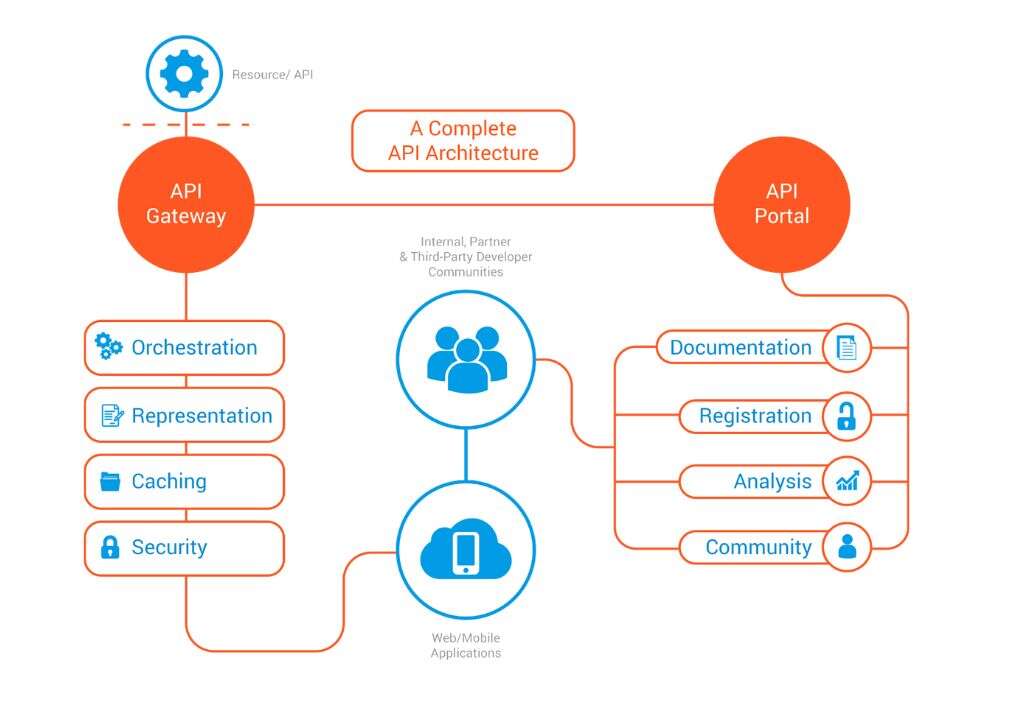Table of Contents:
- What is API management?
- Benefits of API Management
- What is an API management platform?
- API Manager Capabilities
- How to Evaluate an API Management Tool
- API Management Tools
1. What is API management?
API management refers to the process of designing, deploying, and monitoring APIs in a secure and scalable manner. APIs (Application Programming Interfaces) are the building blocks that allow different software systems, applications, and services to communicate and exchange data seamlessly. API management involves a set of tools, processes, and policies aimed at simplifying API development, enhancing security, improving developer experience, and gaining insights into API usage.

2. Benefits of API Management
API management is essential for various reasons:
- Security: APIs can expose sensitive data, and it’s crucial to secure and protect them from unauthorized access. API management platforms provide authentication, authorization, and encryption mechanisms to ensure only authorized users can access the APIs and reduce the risk of data breaches.
- Developer Experience: APIs are primarily used by developers to integrate applications and services. API management platforms offer developer-friendly documentation, interactive sandboxes, and Software Development Kits (SDKs) to make it easier for developers to understand and integrate APIs. This streamlines the development process, reduces learning curves, and improves developer productivity.
- Traffic Control and Analytics: APIs handle a significant amount of traffic, and managing this flow is crucial for maintaining performance and preventing bottlenecks. API management platforms allow you to control the traffic flowing through your APIs, set usage limits, and manage rate limits. Additionally, they provide analytics and reporting capabilities to monitor API usage, identify usage patterns, and proactively address issues.
- Scaling and Integration: APIs need to be designed and managed for scalability to handle increasing traffic and demand. API management platforms offer features such as versioning, backward compatibility management, and API lifecycle management, making it easier to scale and integrate APIs. These features ensure that API updates do not disrupt existing integrations and provide a seamless experience for API consumers.
- Monetization: In some cases, organizations can generate revenue through APIs. API management platforms enable businesses to monetize their APIs by implementing pricing plans, usage-based billing, or subscription models. This allows organizations to create value-added services around their APIs and tap into new business opportunities.
3. What is an API management platform?
An API management platform is a centralized solution that provides a comprehensive set of tools and capabilities to manage APIs throughout their lifecycle. It serves as a single point of control for designing, deploying, monitoring, and securing APIs. API management platforms typically include features such as API gateway, developer portal, security and access control, traffic management, analytics and reporting, and API lifecycle management.
4. API Manager Capabilities
API management platforms offer a range of capabilities to ensure secure and efficient API management:
- API Gateway: Acts as an entry point for API requests, enabling security enforcement, traffic control, and protocol transformation.
- Developer Portal: Provides a self-service platform for developers to discover, explore, and consume APIs, along with documentation, interactive sandboxes, and SDKs.
- Security and Access Control: Allows you to authenticate and authorize API requests, implement identity and access management, and enforce security policies.
- Traffic Management: Enables you to control and monitor the traffic flowing through your APIs, manage rate limits, and implement caching strategies to optimize performance.
- Analytics and Reporting: Provides insights into API usage, performance, and potential issues through analytics dashboards and reporting tools.
- API Lifecycle Management: Offers features to version APIs, manage backward compatibility, handle deprecations and retirements, and track API usage and performance over time.
5. How to Evaluate an API Management Tool
When selecting an API management tool, consider the following factors:
- Ease of Use: Look for a tool that provides a user-friendly interface and intuitive workflows for designing, deploying, and monitoring APIs.
- Security Features: Ensure that the tool offers robust security mechanisms like authentication, authorization, encryption, and protection against common API vulnerabilities.
- Scalability and Performance: Evaluate the tool’s capabilities to handle high traffic volumes, scale API infrastructure, and support distributed architectures.
- Developer Experience: Assess the developer portal, documentation, and SDKs provided by the tool to ensure an excellent developer experience.
- Integration Capabilities: Check if the tool integrates well with your existing systems, such as authentication providers, analytics tools, and back-end services.
- Support and Community: Consider the level of technical support provided by the tool’s vendor and the availability of a vibrant community for knowledge sharing.
6. API Management Tools
Several API management tools are available in the market, offering a range of features and capabilities. Some popular API management tools include:
- MuleSoft Anypoint
- Boomi API Management
- Akana API Management Platform
- IBM API Connect
- Azure API Management
When choosing an API management tool, consider your organization’s requirements, budget, and scalability needs.
In conclusion, API management helps organizations streamline API development, enhance security, improve developer experience, optimize traffic control, and open up revenue-generating opportunities. With the increasing reliance on APIs, API management is becoming a critical aspect of digital transformation, ensuring successful integration and communication between diverse software systems and services.



